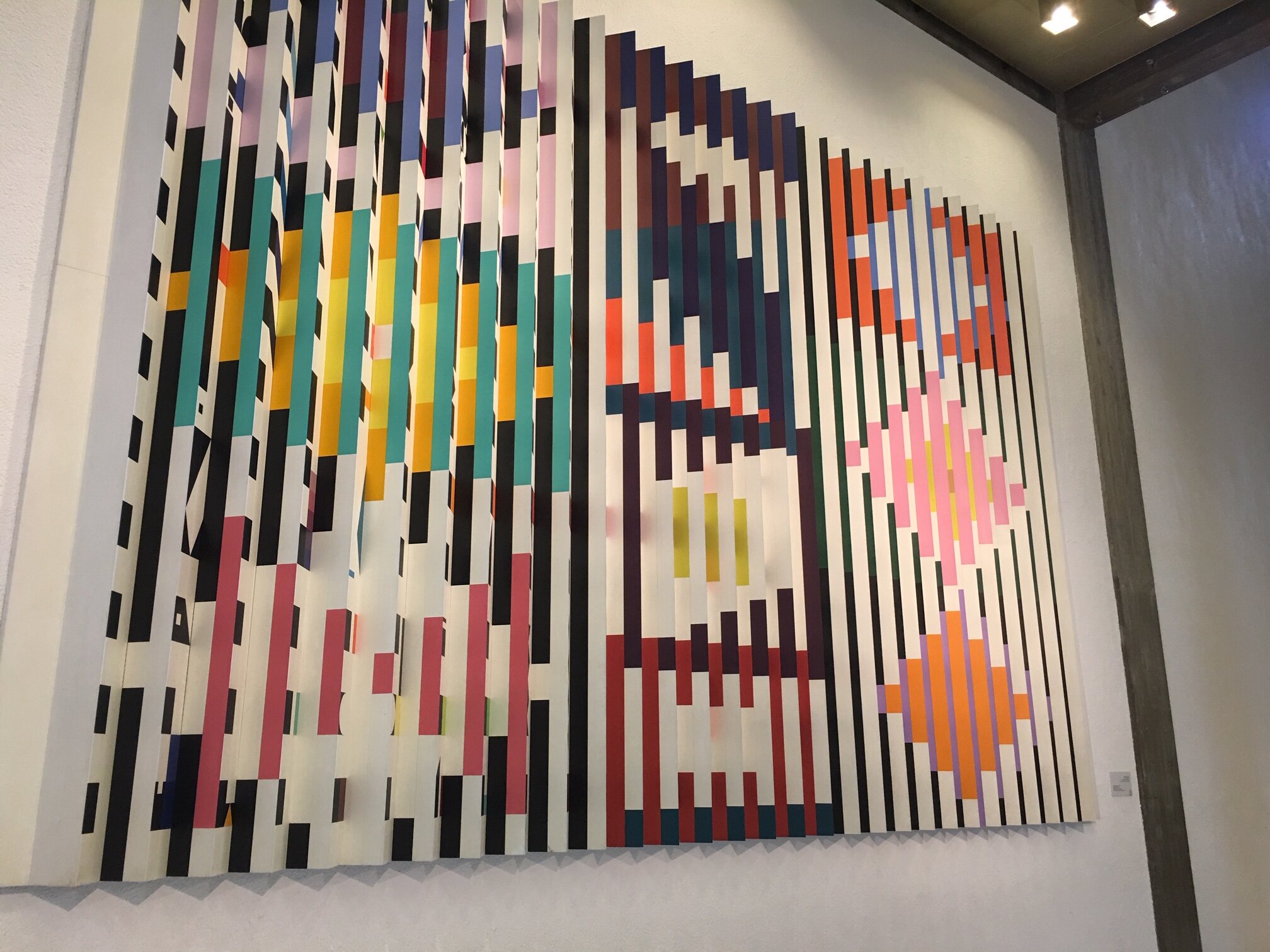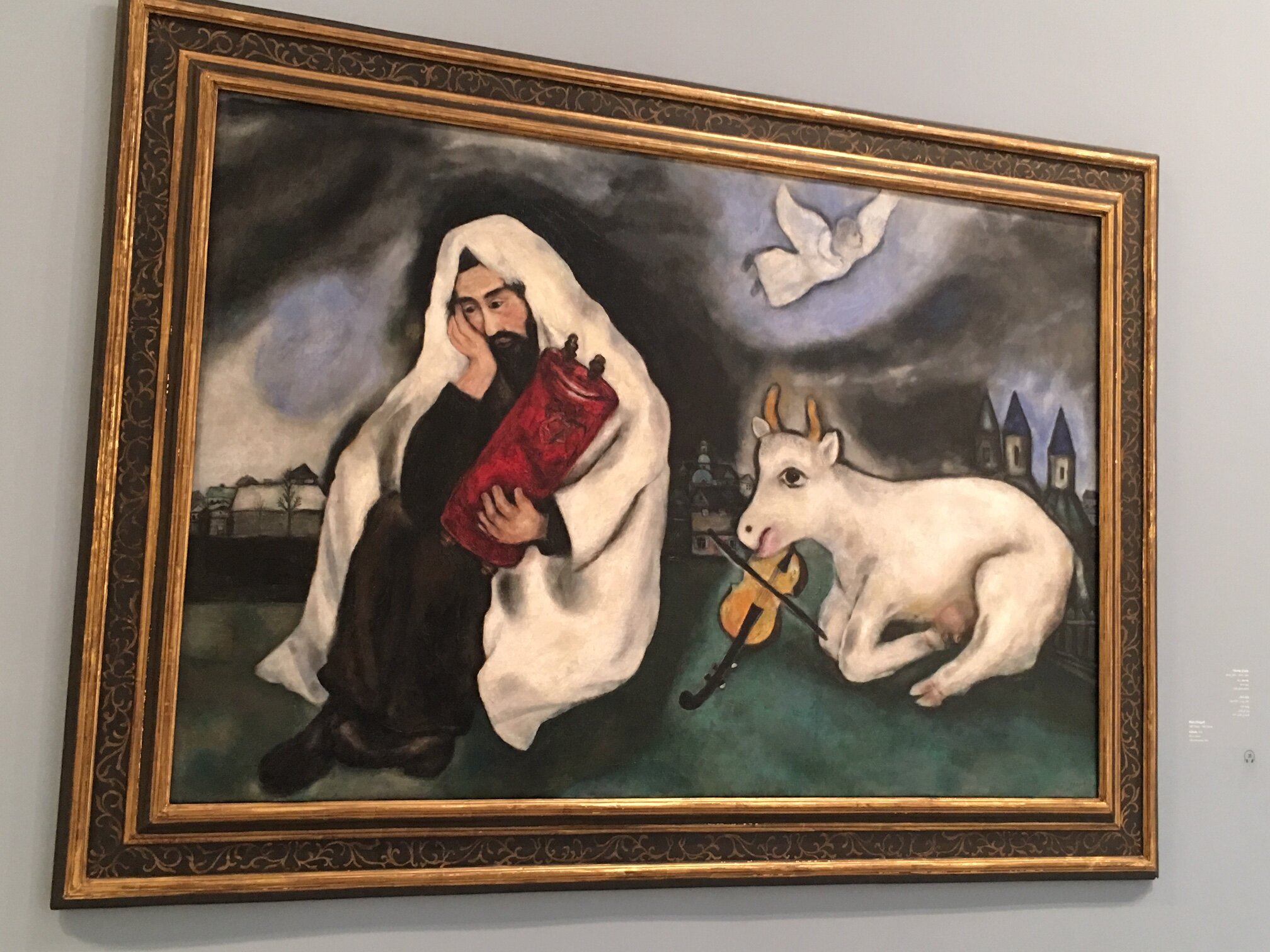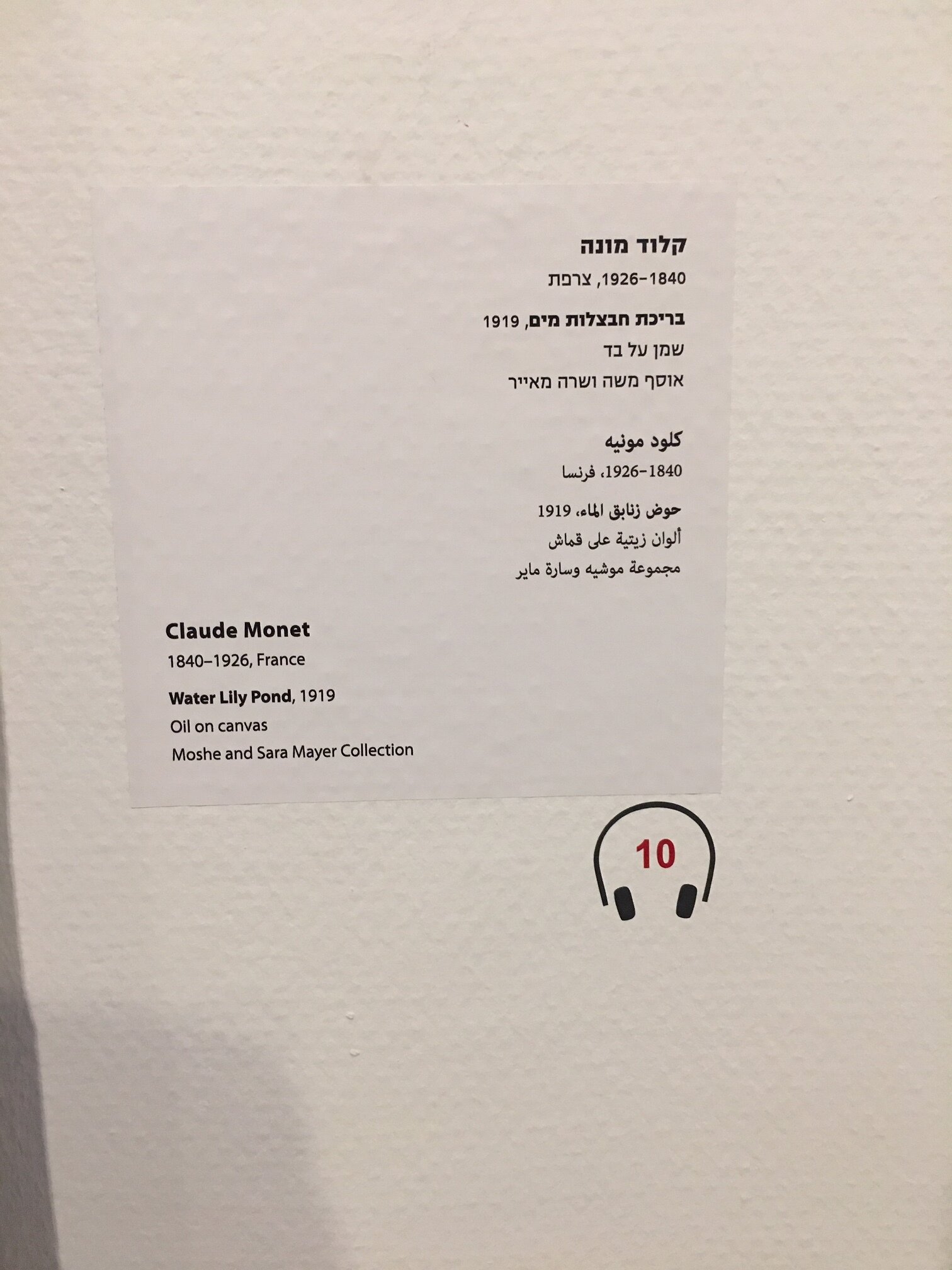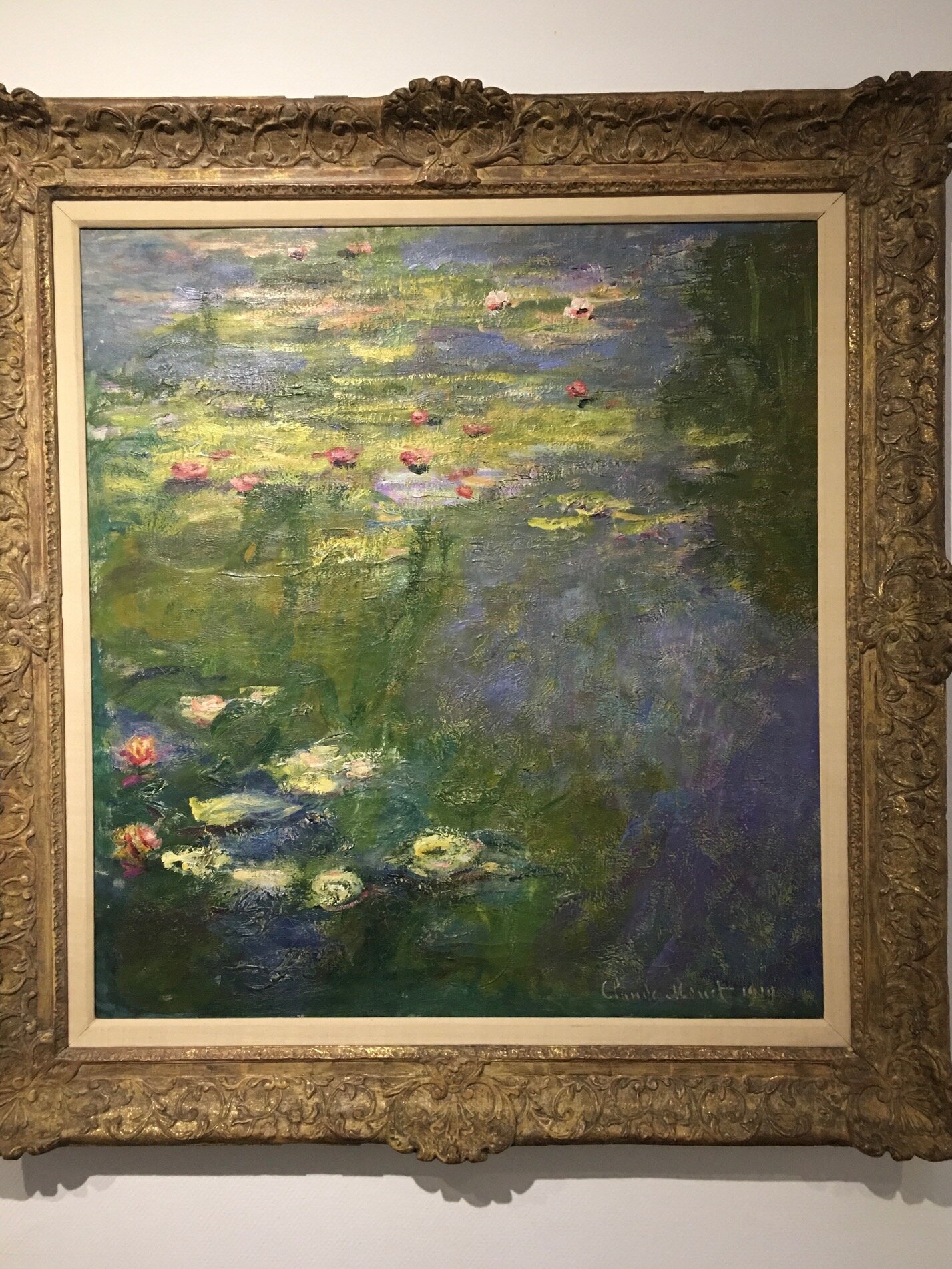Address
27 Shaul HaMelech Blvd., The Golda Meir Cultural and Art Center, Tel Aviv-Yafo, Israel
Telephone
972-3-6077020
Website
https://www.tamuseum.org.il/en/
WHAT I LIKED: Some verbal descriptions on the app and the building design, including ramps and soft light made the visit a very pleasurable one.
WHAT I MISSED: Programs for visually impaired people (VIP) and a clearer layout for the accessible tour on the app.
To read a summary of the blog please click the IN SHORT button.
A too-short visit to Israel brought us to the youthful, thriving, modern city of Tel Aviv. After enjoying a walk on the beaches and a tour through the Bauhaus architectural jewel and UNESCO World Cultural Heritage site the White City, we found our way to the Tel Aviv Museum of Art.
About the Museum
Israel’s first art museum, founded in 1932, is a leading and influential institution dedicated to the preservation and display of modern and contemporary art from Israel and abroad. It was instigated by Tel Aviv’s first mayor, Meir Dizengoff, who donated his own private residence to open a museum. On May 14, 1948, the Israeli Declaration of Independence was proclaimed at the Museum, thus marking a cornerstone in the history of Israel.
In 1959, the museum moved to a specially-designed new space, the Helena Rubinstein Pavilion, now devoted to temporary exhibitions. The need for more space led to the opening of several new buildings. The Main Building, opened in 1971, houses the Museum’s permanent collection and temporary exhibitions. In 2011, the Herta and Paul Amir Building was inaugurated alongside the museum’s Main Building to host a comprehensive presentation of Israeli art from the Museum’s collection and temporary exhibitions. The courtyard between the buildings offers a place of tranquility: the Lola Beer Ebner Sculpture Garden, which displays modern and contemporary sculptures.
The collection focuses on Israeli Art, Contemporary Art, and Modern Art and also shows art from a range of different fields: painting, sculpture, print, drawing, photography, video, installations, architecture, and design.
Yaakov Agam, Place of Time (1970), a site-specific installation of kinetic art in the lobby of the museum
Entrance and Galleries
Welcoming and spacious entrance areas provide easy access to the museum. The modern architecture makes it very easy to walk through the gallery spaces without the fear of unseen steps anywhere. Ramps lead to different levels and the often natural light, combined with modern fixtures, gives the galleries soft light and a relaxing feeling as well.
Ramps invite the visitor up into the galleries.
Marc Chagall, Solitude (1933)
Labels, Audio Guide, and App
The labels are mostly placed to the right side of the artwork and thus were easy for me to find. I was happy to encounter a legible font and font size and a good-sized symbol for the audio guide – I usually take a photo on my phone and enlarge the text to be able to read it. I always appreciate being able to find the label without difficulty! At the time of my visit the museum offered an audio guide with a very clear and manageable display that was well-designed and good to use.
Now the museum has launched an app that allows you to download different tours, such as Top Ten, Israeli Art Collection, Children’s Tour, Architecture, Sculpture Garden, special exhibitions and, to my delight, even a “Seven Accessible Masterpieces“ tour for visually impaired people. Most of the tours on the app offer an easy-to-navigate layout with photos of the paintings, transcripts, and audio.
Unfortunately, the tour for visually impaired people is rather hard to use. There is not enough contrast and legibility, and there are no photos of the paintings included, which makes it hard to understand the verbal description provided. I would love to be able to see the described painting while listening to the verbal description as you can do on the other tours on the app.
Claude Monet, Water Lily Pond (1919)
Last, But Not Least
A visit to the Tel Aviv Museum of Art is a “must“ on the to-do list when you have some time left in this lively spot. The closer insight into Israeli Art was especially thrilling for me as I have not encountered many Israeli artists before.








